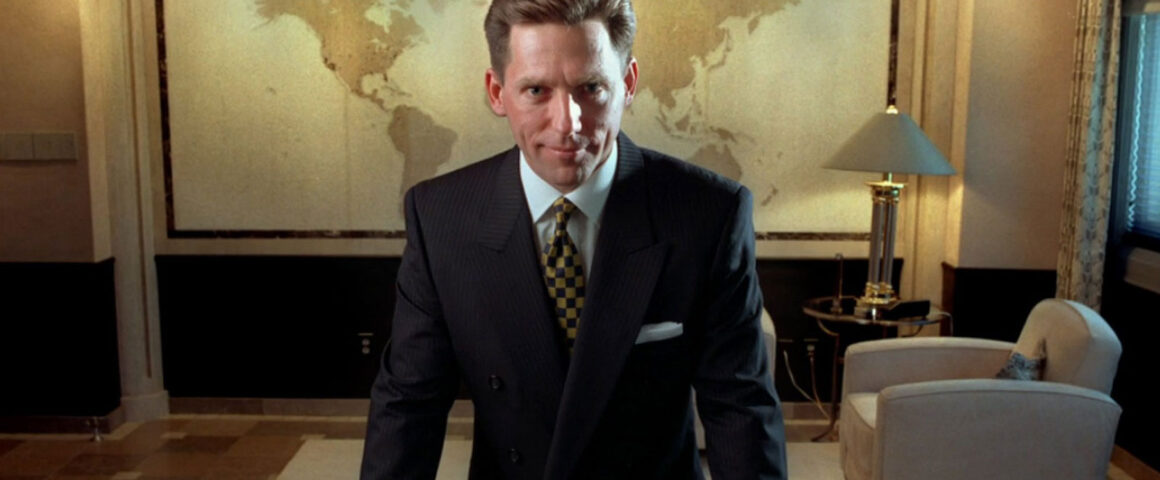“Are we clear? Are we clear?” . . . “Crystal.” — Tom Cruise and Jack Nicholson in “A Few Good Men”
Based on the book by Lawrence Wright, director Alex Gibney (“The Armstrong Lie”) has delivered another hard-hitting documentary in Going Clear: Scientology and the Prison of Belief, an exposé of the abuses of the Church of Scientology. Backed by videos, animations, graphs, and stories culled from hundreds of hours of interview footage, Gibney details the Church’s history of coercive tactics to control its members. Compelling and persuasive interviews are held with former Scientologists who have recently left the church including film writer and director Paul Haggis (“The Next Three Days”), actor Jason Beghe (“X-Men: First Class”), former executives Marty Rathbun, Mike Rinder, and author Lawrence Wright as well as members Tom De Vocht, Sara Goldberg, Hana Whitfield, and Sylvia ‘Spanky’ Taylor, a former liaison with John Travolta.
The documentary traces Scientology from its creation in the 1950s by L. Ron Hubbard, a science fiction writer, who developed the science of Dianetics, a best-selling book and program that led to the growth of Scientology in its present form as the tax-exempt religion that exists today in most parts of the world. According to their website, the ultimate goal of Scientology is “true spiritual enlightenment and freedom for all,” and its essential tenets are that we are immortal spiritual beings whose experience extends well beyond a single lifetime. The film, however, does not discuss these ideas, but only the intent of the program’s methodology which is to free individuals from the influence of past traumas by exposure and removal of the body’s recording of these events known as “engrams.”
To support the goal of having every member become “clear,” Hubbard introduced the “E-meter,” a tool used to detect changes in a person’s state of mind and established an elite group called the Sea Org as the top of the hierarchy. The main thrust of Going Clear: Scientology and the Prison of Belief is the Church’s treatment of its members, its preoccupation with litigation, and its obsessive paranoia in attacking those who have criticized it. Singled out for attack is the Church’s disconnection policy in which members are pressured to sever relationships with those who criticize the organization, even friends and members of their own family who are labeled SPs (Suppressive People).
Gibney also describes the Church’s “Fair Game Policy” which is used, often with the cooperation of a complicit media, to harass and intimidate those deemed to be the organization’s enemies; for example, the CBS “60 Minutes” broadcast from 1991 made false charges (later recanted) against Est founder Werner Erhard in order to destroy his character and reputation. Former Church staff members also talk about the use of physical violence by superiors towards staff members, and the use of supposedly confidential information freely given in auditing sessions to blackmail potential dissenters, in the spirit of J. Edgar Hoover.
Coming in for some harsh treatment are media celebrities Tom Cruise and John Travolta. Stories abound about how the Church tried to break up Cruise’s marriage to Nicole Kidman whom they considered to be a suppressive person. There is also a claim (denied by Scientology) that a young actress, Nazanin Boniadi, was groomed to be Cruise’s girlfriend but ended up cleaning bathrooms when she said something that offended the Church hierarchy. A somewhat unsettling moment is a video showing Church leader David Miscavige presenting Tom Cruise with a Freedom Medal of Valor award during a ceremony in a grand hall packed with thousands of cheering supporters.
Going Clear: Scientology and the Prison of Belief is one-sided almost by necessity since no member of Scientology agreed to be interviewed, yet it would still have been welcome to hear from current Scientologists about their support of the Church, how its programs have affected their life, and whether or not they are aware of the allegations brought against the organization. Attacks against a religion do not necessarily mean they are true or that they would in any event negate the positive service the Church provides to society. It seems to me, however, that if the allegations made against the Church and its staff are false, they would be willing to defend themselves and “clear” the air. The fact that they choose to maintain their silence speaks volumes. To the extent that Going Clear: Scientology and the Prison of Belief penetrates that silence, it is to be applauded.




'Movie Review: Going Clear: Scientology and the Prison of Belief (2015)' have 4 comments
May 13, 2015 @ 8:55 pm Wolf Howl
All religions are a prison of belief.
May 13, 2015 @ 9:22 pm Phil
Interesting watch. It didn’t reveal anything new though.
May 13, 2015 @ 9:37 pm Dranch
I never realized how far-out crazy Tom Cruise is.
May 14, 2015 @ 7:16 pm Quality Apples
I’m not a sympathizer for Scientology in any way but it’s getting a bad rap. The types of accusations levied against it in this documentary can be said about any organized religion.